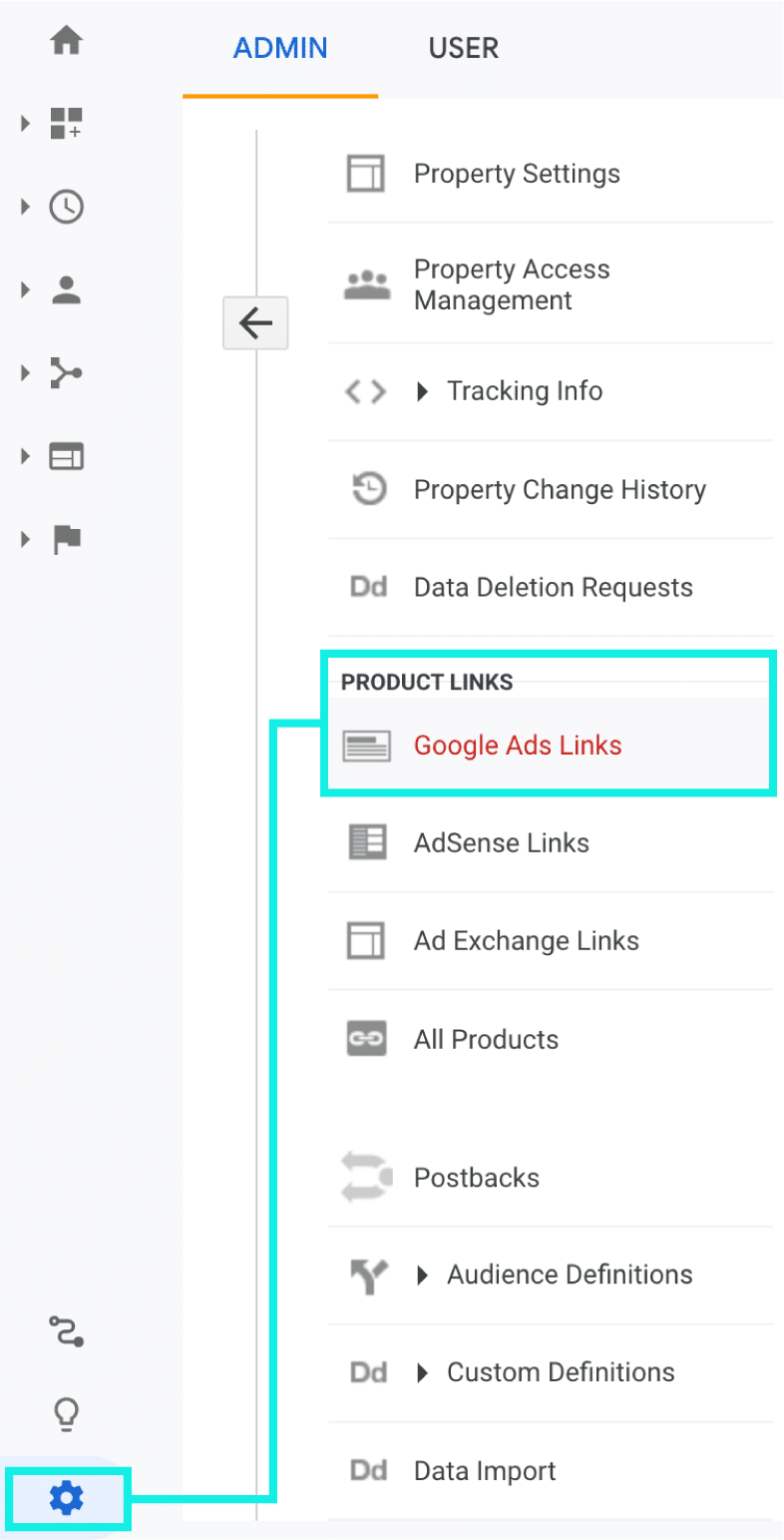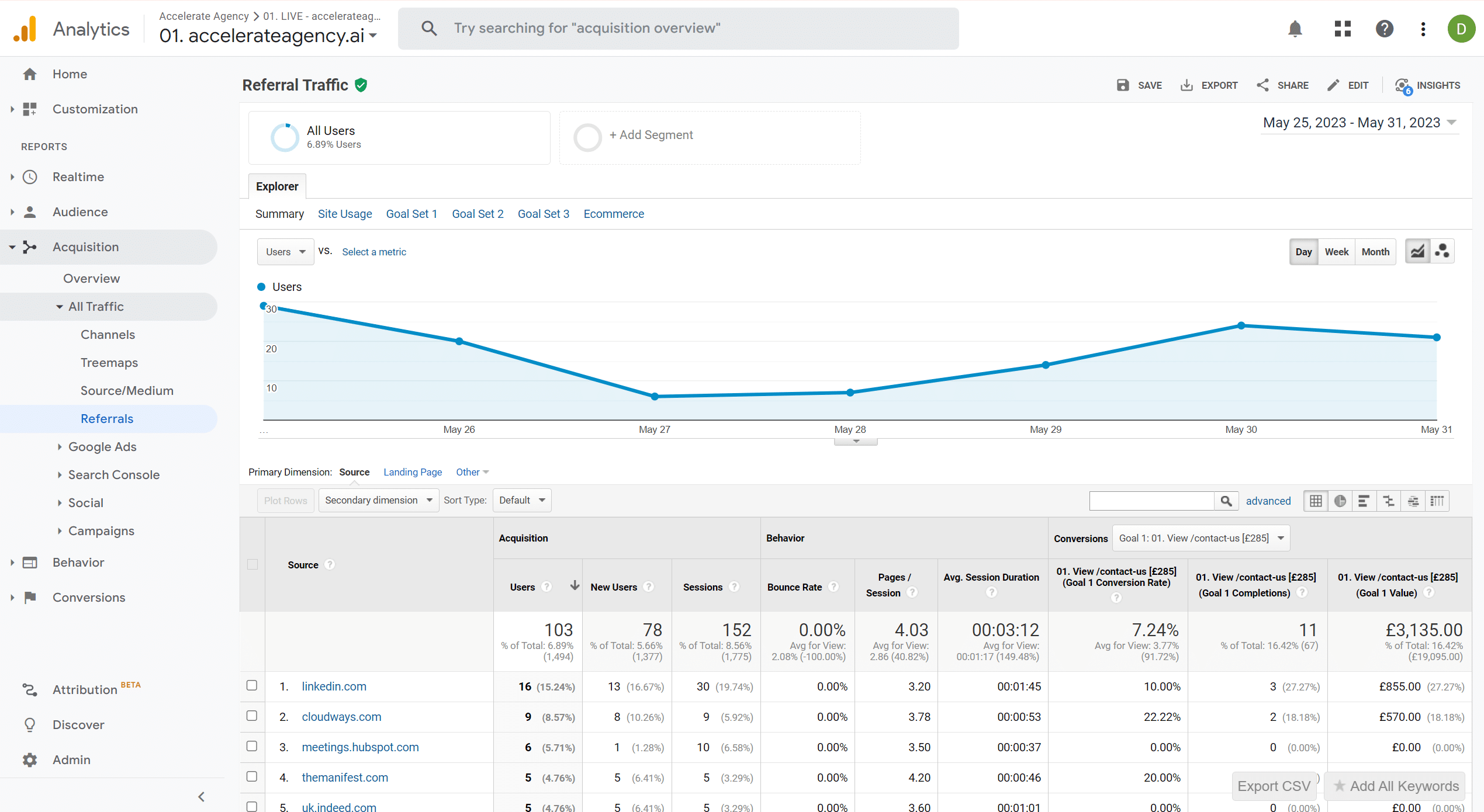20 Google Analytics Tips to Improve Your SEO Strategies
In an ideal world, all you’d need to do to succeed is to sell great products and provide excellent customer service.
Unfortunately, there’s a bit more to it than that. While word-of-mouth referrals and positive reviews are excellent ways of getting people to search for your website, they’re not enough to keep you in that coveted place: page one of the search results.
Good SEO (search engine optimization) practice is critical to getting your business seen in Google’s rankings. This will give you what you’re really looking for – conversions. You can’t convert idle browsers into paying customers if no-one is browsing your site, after all! But just how can you improve your SEO strategies? And what tools should you use?
Well there’s one tool that you simply can’t do without: Google Analytics. Read on to find out what it is and how it can help you.
Of course, you might already be using it. If that’s the case, use the links below to find the right information for you:
- What is Google Analytics?
- What is SEO Analytics
- Why is Google Analytics essential to SEO?
- Some essential Google Analytics reports for SEO
- 20 tips to improve your SEO campaigns using Google Analytics
- 7 SEO tracking metrics that matter
- FAQs
What is Google Analytics?
Google Analytics is a clever tool that allows website owners to track, analyze, and report data about their site. As you might expect, it focuses on data gathered through the Google search engine – which is where you’re likely to generate most of your traffic from anyway.
It primarily works by using a block of JavaScript code that gets added to pages on the website. With this in place, Analytics can track and monitor activity.
Many businesses use Google Analytics to see:
- Who is visiting their website
- Where they’re coming from
- How long they’re on the site for
- How they spend their time on the website
- Whether they convert to paying customers
Book a Consultation
What is SEO Analytics?
SEO analytics allow for an incredibly precise interpretation of the raw data you have about your website. Traditional referral campaigns like email shots and social media can resemble a bit of a scattergun approach. It can be difficult to accurately measure their effectiveness, and any success is often fleeting – how often do you even see Facebook posts from two days ago, much less click on them?
SEO analytics is a laser pointer. It allows you to sift through and clarify the data in front of you to glean insights you can use to your advantage. You can use the information to identify new opportunities for high-ranking SEO keywords or discover which pages the majority of your organic conversions are coming from.
On a granular level, you can drill down into the nuts and bolts of your website and find out if something like page load speed is frustrating your visitors or, worse, turning potential customers away.
When it comes to SEO analytics, the more data you have, the more actionable insights you can extract from it. This leads us neatly on to…
Why is Google Analytics essential to SEO?
Google Analytics is an extremely useful tool when it comes to SEO. The very search engine that people are using to find your website is handing out valuable nuggets of data left, right, and center to help you improve it. That’s priceless.
This SEO data is comprehensive and accurate, enabling you to gain precious insight into your target audience and demographic. With this data in hand, you can start making meaningful changes to your website in order to best meet your customers’ needs.
For instance, if you notice the bounce rate on a particular landing page is high, perhaps the content on that page needs a refresh. Or maybe you need to better optimize it for mobile devices. You might consider hiring an agency (like accelerate – which specializes in SaaS Marketing!) to help you boost your content marketing efforts.
SEO and Google Analytics go hand in hand and can truly change how your website operates helping you put the customer first. Remember: if your visitors are happy with the content, product, and website layout, they’re more likely to make a purchase.
Some essential Google Analytics reports for SEO
So, we’ve established that Google Analytics is an absolute goldmine for SEO, but what should you be looking for specifically?
Overview report
Looking at the overall picture of your website is a great place to start. Google’s overview report will show you your website’s traffic volume and its patterns i.e. how many people are visiting and what they’re doing once they get there.
It can tell you:
- The number of unique users who have clicked on to your site
- How many times they visited
- What pages they went to
- How much time they spent perusing your wares
- How high the bounce rate was.
The Google overview report can also filter this information into specific time frames for even more useful data.
Acquisition report
Your visitors know where you are, so it’s only fair that you should know a little about where they came from, right? This is what the acquisition report takes care of for you.
This report will tell you how the people who have visited your website found it in the first place. This is great from an SEO analytics standpoint as you can discover which sources are referring traffic your way and, more importantly, which keywords are doing the trick.
On a broader level, an acquisition report will also show you how effective your paid ads, social media marketing, and email newsletters are at generating traffic to your site.
Behavior report
Are your website visitors earning gold stars? Or should they be on the naughty step? Just as any teacher wants a quiet and attentive classroom, so too do you want visitors to your site to behave in a certain way.
The Google behavior report will tell you if your visitors are acting the way you want them to once they arrive. It allows you to determine which pages they’re viewing, how long they’re on those pages, and how they’re finding their way to them to begin with. It can also identify any problem areas that might be causing your guests to leave prematurely.
These reports are crucial when it comes to ensuring a solid user experience and knowing when you may need to change course. Offering more of the content you know your audience likes and maybe sprinkling in a few more calls to action are great ways to refine your site.
Conversion report
The bottom line. That’s what it’s all about.
A conversion report will let you know how aligned your goals are with your user behavior. Are they making purchases or signing up for your newsletter? If not, why not? You can use the learnings from these reports to establish the effectiveness of your conversion funnels and where they might need improving.
Ensuring your conversion rates are optimal is crucial. To say that analyzing and acting on these reports is a good use of your time is an understatement.
20 tips to improve your SEO campaigns using Google Analytics
Now you know why Google Analytics is so helpful, it’s time to look at how to use it. Here are 20 tips on how to use Google Analytics to improve your SEO strategies:
1. Track visitor demographics and interests
It’s important to know where your site visitors are coming from. That way, you can concentrate ads in certain areas or personalize your content to suit your visitors. It’s not just location, either. Keeping an eye on age, location, gender, interests, and more, will let you build a detailed customer persona to market to.
Google Analytics allows you to generate interests and demographic reports. Just head to the account and property where you want to generate reports, click property settings, and under advertising features, set enable demographics and interests reports to on. Then save it.

2. Analyze landing page traffic
Head to the landing pages section, under behavior. Here you’ll find a list of your top-performing pages. Analyzing your best-performing pages gives you an insight into what content is popular and engaging for your audience, as well as which pieces of content could use updating.
You can sort landing page data by clicks, impressions, average position – or even all three. This is a great opportunity to discover low-hanging fruit that just needs a little attention to improve.
3. Google AMP tracking
Google AMP (accelerated mobile pages) offers a powerful browsing experience for those visiting your site on mobile. You can analyze the user interactions on your AMP pages. To do this you’ll need to add Google Analytics tracking. This can be done manually, so it’s best to let someone with coding experience take over.
Once you’ve got the code all set up, you can find the AMP data by going to behavior » site content » all pages. Then type “/amp” into the search bar above the table to generate the traffic reports for your AMP pages only.
4. Install a tracking code on your website
When you first create a Google Analytics account, it should give you a tracking code. It looks something like this:

You can then install this on every page of your website, whether it’s hosted on WordPress or custom-built. The tracking code gathers information about each user every time they visit your site. This is also how Google Analytics gathers all of its data about your site, which is what you see when you open up your Google Analytics dashboard.
5. Create SEO-related goals in Google Analytics
Once you’ve added your tracking code, you can create goals in your Google Analytics account. Conversion goals allow you to set targets for the number of people visiting your site vs those that actually buy something.
You can set up conversion goals by clicking admin » goals » new goal. Conversion goals not only track when someone views the page but when they actively engage with it – such as filling out a form or buying a product. By setting these goals, you can check how much organic traffic a page gets and how many leads came from those visitors.
6. Track visitor conversion rates
Leading on from above, Google Analytics’ goals tool isn’t the only place where you can view conversion rates. You can get an overview of conversion rates on desktop compared to mobile.
First head to audience, then click overview. From here you can look at conversions. It will also show you the average bounce rate, and how long users spend on each page depending on the device they are using.

7. Make an SEO dashboard
Did you know you can customize your data from Google Analytics on your dashboard? You can tailor it to your business, and what you first want to see as soon as you open the platform. SEO dashboards lay out the data in a simple, easy-to-view format.
Dashboards allow you to (unsurprisingly) view your Google Analytics data in a dashboard format. For those who like to digest information visually, with graphics and images, an SEO dashboard may be the best option.
8. Track visitor bounce rates
If a user doesn’t immediately find what they’re looking for when they click on to your site, or they aren’t engaged with your site content, they may click off. This is known as ‘bouncing’. All websites will have some visitors that bounce, but it’s important to keep this number as low as possible.
There are many reasons your site can experience high bounce rates, such as slow loading times, poor landing page content, or frustrating UI (user interface) and UX (user experience). You can find user bounce rates under audience » overview.
If you notice people are clicking through but quickly leaving, a lack of engaging content might be the cause. If you want to create meaningful, valuable content that’s going to keep people on your site, get in touch with us here at accelerate agency . We can help with content marketing, generating SEO-focused content targeting the right audience at the right time.
9. Set up alerts for 404 pages
We’re all familiar with the “404 — Page Not Found” error. It can be inevitable on large sites, so it’s worth monitoring. You can easily do this through Google Analytics.
To start, ensure that all your 404 pages have a unified page title such as “404 — not found” or “Page not found.” Then, do not redirect them – the URL should stay the same.

Enter your page title for 404 pages, starting low and working your way up. Remember, some 404s are inevitable because of typos, so this number should be high enough to rule those out.
You now have everything you need for proper 404 alerts and monitoring. Once you’ve found the 404s you then need to work on what’s causing it. This could be a typo issue as mentioned, or an internal or external link directing to the URL.
10. Improve SEO on the highest converting pages
Google Analytics SEO tools allow you to gain a deep insight into how customers reach your pages. One way to improve SEO is to view your highest-converting pages and optimize them even more. This can also mean including more keywords, and CTA (call to action) pointers to encourage them to finally make a purchase. Hiring experienced third parties like accelerate agency can be a great way to quickly improve a lot of your content.
You can find your highest-converting pages through your SEO dashboard. From here you can analyze them and use Google’s Keyword Planner tool to look for suitable keywords that you might not yet have covered. By making sure you’re incorporating all the top keywords, you increase your chances of visitors finding your site when they look for them.
11. Manage your PPC spend with Google Analytics
PPC or pay per click is a service by Google that allows you to spend money on certain keywords that you know people use when searching for your product/service. This way you can appear higher up in the rankings as a sponsored ad.
Depending on how you set up the adverts, you can also appear on a sidebar of other websites, or on other pages across the internet. In order to do this, you need to link your Adwords and Analytics accounts. Do this under the product linking » Google ads linking section. Ensure you have admin rights and not “user” rights within Google Analytics for the site you want to track.
Login into your Google Analytics account and select “Admin,” then “AdWords Linking” under the second column in the Admin menu. Choose the Adwords account you want then click done.

12. Create annotations
It’s not enough to look at results – you need to track and document them. An easy way to do this is by using an annotations feature on Google Analytics. This will help you to benchmark the performance of content after you’ve set it live.

It also means that everyone who has access to the account can view and add annotations when necessary.
13. Track social shares
Nowadays, getting your content shared online is a big deal. Not only does this help with brand recognition, but it can also create great backlinks. Especially if it’s shared in valuable places. You can, of course, set up Google Alerts to scour the internet for online articles. But you can also set this up through Google Analytics.
Open the acquisition menu. From there, select all traffic » channels. Now you can view the website’s sources of traffic, which are sorted by channel. You’ll be able to view the sources of: Search, Social, Direct, Referral links, Backlinks, Email, PPC, and “Other.”
14. Track your main keywords with Google Search Console
You can sync your Google Analytics with Google Search Console. By doing this you can identify opportunities for improvement with keywords and the pages you want to rank for. Essentially, Google Search Console tells you what keywords people are searching in order to find your content, as well as what content they’re finding and where it’s ranking on Google.
Analyze this information to determine how you can change your content in order to get a better ranking on Google. Search Console will also give you more in-depth information such as search queries, clicks, impressions, and CTR %.
15. Find your traffic referral sites/backlinks
Many digital marketing experts will tell you that content is super important. The same marketers will tell you that backlinks and referral traffic are equally important. You can use Google Analytics to find your traffic referral sites. This means you can see how people are finding your page, and which sites are bringing you the most value.
Google Analytics SEO referral data can find links that aren’t necessarily documented in other tools. You can also find relevant reporters or bloggers to connect with based on those that have already linked to your website. Click traffic sources » sources » referrals.

16. Utilize Google Analytics reports
To improve SEO, it’s great to have an overview of your site’s performance. This is where Google Analytics reports come in. They can give you an insight into how people reach your website, how well it’s performing, and how many conversions you have. You can create monthly, quarterly, or yearly reports.
You can also measure the full effect of SEO in Google Analytics, with assisted conversions in the Multi-Channel funnel report. This will show you when SEO played a part in bringing key conversions, even when it wasn’t the last click.
This can be useful to analyze with the rest of the SEO team to identify areas that may need further improvements, such as content creation or link building. Using an agency such as accelerate can also help with this, as we have a comprehensive understanding of how you can use the data to generate traffic and improve sales through content marketing.
17. Compare organic vs paid traffic
Google Analytics lets you compare organic vs paid traffic. On average, organic search drives 53% of website traffic, while paid search drives only 27%. Your organic traffic should be outperforming your paid results – so it’s a good idea to keep monitoring exactly how your visitors reach your site.
Focus on specific pages and track metrics for your organic search traffic, and then view paid traffic too. You can then see the areas where you need to improve. If your organic reach is low. Improve your SEO techniques. If your paid searches are low – are you targeting the right keywords? It’s all about balance.
18. Automate organic traffic dips and spikes
You can’t improve SEO if you’re not constantly scanning your site for problems. It’s time-consuming and monotonous trying to do this manually, so set up alerts for organic performance.
Go to admin » view column » custom alerts » create a new alert. Then save the alert once you’re done.
To begin, you can set up an alert that lets you know when there’s a certain percentage of dip in traffic over a certain period. For instance, a 25% dip over the week. You can adjust this accordingly and closely monitor your site for changes.
19. Generate behavior reports
Behavior reports will tell you everything you want to know about your content! Especially the best-performing pages on your website. Head to site content » all pages. It will then bring up a list including the top pages on your website. To view the top exit pages click site content » exit pages.
To see the terms that are frequently searched for you can click site search » search terms. And this will give you an idea of what people are searching for on your website.
You can also find out how fast your website loads by clicking site speed, as well as find suggestions from Google on how to make your website load time quicker at site speed » speed suggestions.
20. Utilize shortcuts and email data
Keeping every member of the team updated on how well you’re performing is essential. Although not everyone needs a detailed breakdown, some may benefit from an overview or a specific alert about changes on the website.
Save your most frequently checked reports and have them emailed to yourself or other team members regularly. Use the email button and type in your company email. If you’re sending it to someone outside your organization click admin » view » scheduled emails to ensure only those working with your company are accessing your data.

7 SEO tracking metrics that matter
It’s all well and good implementing an SEO strategy, but how exactly do you go about tracking its effectiveness? Here are seven metrics you can use to track your SEO.
1. Keyword rankings
If you’re an e-commerce business selling wooden outdoor furniture, it’s safe to say that ranking for the term ‘wooden outdoor furniture’ would be great for your business. You can give yourself the best chance to do this by scattering keywords related to this across your website and by creating engaging informative content about the kind of furniture you sell.
How do you determine whether your SEO is actually working? Use a keyword tracker on Google Analytics. You can also do this through platforms such as SEMrush, which can also track how your website jumps up and down Google’s listings each day.

Now that you’ve got a Google Analytics tracker on your website’s pages, you can see when and how people find your website. Ideally, you’d want most of this traffic coming organically from Google searches relating to your products/services.
Using the tools that Google Analytics has to offer you can investigate all the ways in which people are finding your website. If it’s naturally happening through ranking for a good keyword, then congratulations – that’s good SEO!
2. Location-based organic traffic
Let’s say you’re a local hairdressing salon. Your aim isn’t necessarily to reach the top of Google for ‘hairdresser’. You need it to be specific to your location. Use Google Analytics to build a strong picture of your target audience in your area and capture them with local keywords and great images on your website.
If you are getting inquiries from someone on the other side of the country, then you may need to look into why this is happening and change your SEO strategy.
3. Bounce rate
The dreaded high bounce rate can tell you many things:
- Your website content just isn’t engaging
- Your UI is poor
- You’re ranking for the wrong keyword
- You simply don’t have what the customer is looking for
- The customer accidentally clicked on your page
If your bounce rate is low, that means you’re heading in the right direction. You’re probably ranking for the right terms, in the right place, at the right time.
4. Return on investment (ROI)
Put simply, are you getting conversions? Is the time and effort you spend on SEO being rewarded with genuine orders from happy customers? You can track your conversion rate through Google Analytics. If you are getting orders, and repeat orders at that, then you’re on the right track.
5. Click-through rate
The click-through rate is the number of people who actually clicked on the link vs the number of people who had the opportunity to do so.
If they didn’t click on this, question why that is. Is the CTA not strong enough? Are your keywords not relevant to what they were searching for? The click-through rate is a great metric to analyze your SEO efforts.
You can check your click-through rate on Google Analytics under landing pages.

6. Site speed
Site load times can be a real pain for customers. Not only this, but it can also affect your SEO efforts. Page speed is a direct ranking factor, particularly since Google’s Algorithm Speed Update. Speed can also affect rankings indirectly, by increasing the bounce rate and reducing dwell time.
7. Backlink volume
If you are creating seriously good content, then other websites are likely to link to your website. Having a high number of good quality, high DA (domain authority) backlinks is a good metric by which to measure your SEO success.
Overall, it’s clear that Google Analytics has a crucial role to play in SEO. If you don’t have a good grasp of the tool, then invest in an online course or team up with an agency that does (like accelerate)! There are many ways in which Google Analytics can improve your SEO, so now is the time to create an account and explore all the aspects of the platform.
Use Google Analytics to boost your SEO efforts
Your website is the digital shop window for your business and it needs to be as good as it possibly can be. It must be optimized for the user and free of annoying pain points like slow load times and broken links.
Google Analytics offers an incredible array of tools to help you ensure your site is robust and streamlined. There’s simply no good reason not to use it unless you want to fall behind your competition.
Combining this amazing resource with enterprise SEO metrics, and the knowledge of our experts at accelerate will see your business reap the rewards of a powerful SEO strategy.
FAQs
Does Google Analytics affect SEO?
Google Analytics won’t punish a website for using or not using Google Analytics. That said, it is still a great tool that will affect your SEO for the better if used correctly. This is because it gives you data that can be acted upon to improve the overall website.
Whether this is increasing keyword-focused content, rearranging a landing page, or using more CTAs on a page, Google Analytics can give you the knowledge and tools to improve your SEO. How you use that knowledge is up to you. What’s more, it can be used in conjunction with other tools such as Adwords, that can also affect SEO.
How do I learn SEO and Google Analytics?
There are many SEO courses available online. You can also take Google’s official Google Analytics online learning course. Once you’ve completed the course you’ll be awarded with a certificate to show that you have knowledge of how the platform works.
It’s a big platform with plenty to learn, so learning it alone may take some time. Some people prefer to work with agencies that have an even deeper understanding of how it works, and how to use it to their advantage. At accelerate agency, for instance, we can help with a combination of SEO and content marketing to really give your website the best chance at generating traffic and increasing conversions.
<h3″>What are the tools of SEO?
There are countless tools to help you improve your SEO. Some key programs include:
- Google Analytics
- Google Adwords
- Yoast
- MozBar
- UberSuggest
- Answer The Public
- Ahrefs
- SEMrush
The type of tool you need depends on how you’re looking to improve your SEO. Some offer a plethora of features that cover all bases. Some focus on certain areas of SEO, such as targeting long-tail keywords or searching a website’s backlinks.
Is SEO still relevant in 2023?
Paid adverts and social media marketing are all well and good, but SEO is definitely still relevant in 2023. Organic traffic is the best traffic. It brings genuinely interested customers to your website, and they may even make a purchase. Creating adverts means you are finding the customer. If your SEO is good enough, the customer is finding you.
For the most part, this is free, organic reach. Meaning that you can spend less on PPC and more on SEO. Some websites find that the best results are a mixture of the two. So, although paid adverts are becoming increasingly popular, good old-fashion SEO is definitely still relevant in 2023.
If you are enjoying this post why not book a consultation with accelerate agency to see how we can help skyrocket your SaaS business.


